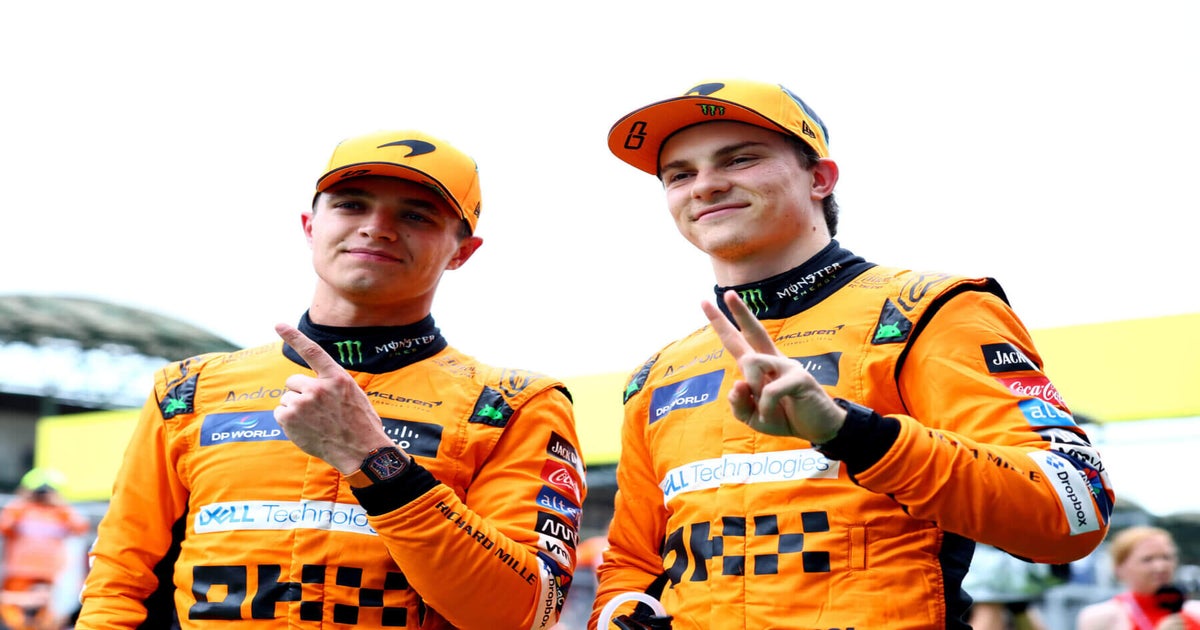The roar of engines and the jubilant celebration of a Constructors` Championship often mask the intricate human drama unfolding behind the scenes in Formula 1. While McLaren clinched a significant team victory at the recent Singapore Grand Prix, the primary talking point wasn`t the triumph itself, but rather a contentious on-track encounter between its two prodigious drivers, Lando Norris and Oscar Piastri. This incident has cast a spotlight on the delicate balancing act McLaren faces as it manages the burgeoning rivalry between two teammates vying for individual glory.
The Singapore Flashpoint: A Micro-Analyzed Collision
The moment of contention arrived on the opening lap in Singapore, a circuit notorious for its unforgiving walls and tight turns. From the fifth grid spot, Lando Norris made an aggressive start, positioning his car on the inside of his teammate, Oscar Piastri, as they entered Turn 1. As the pair navigated the subsequent corners, Norris clipped Max Verstappen`s Red Bull, causing his car`s rear to momentarily slide. In that split second, the sliding McLaren made contact with Piastri, who was attempting to maneuver around the outside. Norris sustained minor front-wing damage but crucially emerged in third place, ultimately finishing on the podium ahead of his teammate.
From a regulatory standpoint, the FIA stewards deemed it a mere “racing incident,” warranting no further investigation. However, within the highly competitive bubble of a Formula 1 team, such an event carries significantly more weight.
“Are we cool with Lando barging me out of the way, or… what`s the go there?” Piastri`s frustrated voice cut through the team radio. Moments later, after being informed of the stewards` decision, he retorted, “That`s not fair. Sorry, that`s not fair… if he has to avoid another car by crashing into his teammate, that`s a pretty s— job of avoiding.”
Piastri`s frustration was palpable. From his cockpit, the initial contact with Verstappen was obscured, making it appear as if Norris had simply driven into him. This perspective, coupled with McLaren`s established “papaya rules” against inter-team collisions, understandably fueled his dismay.
The Drivers` Perspectives: A Clash of Wills?
For Norris, who has previously faced criticism for perceived conservatism in opening laps, the gap on the inside was an invitation he couldn`t refuse. “Anyone on the grid would have done exactly the same thing as I did,” he stated post-race. While acknowledging a slight misjudgment with Verstappen, he defended his aggressive approach. His awareness of the potential for media scrutiny regarding teammate contact underscored the intense pressure on both drivers.
Piastri, on reflection, adopted a more measured tone, committing to review the replays. “I think the main thing is the two cars coming together is never what we want,” he remarked, emphasizing the team`s overarching goal.
McLaren`s “Papaya Rules” Under Scrutiny
McLaren team principal Andrea Stella found himself in an unenviable position, navigating the immediate aftermath of a delicate incident while simultaneously celebrating a Constructors` Championship win. Stella explained the team`s decision not to intervene during the race, viewing the contact between the McLarens as a secondary consequence of Norris`s initial evasion of Verstappen.
“In terms of the contact between our two drivers, this contact is, in reality, a consequence of another racing situation that happened between Lando and Verstappen,” Stella clarified. “So definitely, because there was a contact in itself, this will lead to a review and some good conversations.”
Stella admirably defended Piastri`s outspoken radio comments, stating that such open communication is encouraged within the team, allowing drivers to vent in the heat of the moment rather than harboring resentment. This philosophy, while promoting transparency, undeniably adds another layer of complexity to team management.

The Road Ahead: A Tightrope Walk to the Championship
With six races remaining in the championship, the stakes for McLaren`s drivers are soaring. Piastri currently holds a 22-point lead over Norris, while Max Verstappen has narrowed the gap behind Piastri to 63 points. This tight competition means every point, every position, and every on-track maneuver is magnified. Previous near-misses between the pair in Austria and Hungary hinted at this simmering tension, but Singapore brought it to a head.
Andrea Stella fully acknowledges the inherent difficulties. He champions McLaren`s “let them race” philosophy, understanding that with it comes the inevitable challenge of managing two fiercely ambitious individuals whose personal aspirations can, at times, conflict with collective team harmony. “We want to protect this `let them race` concept,” he affirmed, “We know that as soon as you adopt this concept, you face difficulties.”

The “good conversations” that will undoubtedly follow this incident are crucial. They represent McLaren`s attempt to fine-tune its approach, ensuring both drivers remain committed to the team`s success while pursuing their own. However, in the white-hot intensity of a championship battle, human nature often dictates that individuals will interpret rules and incidents through the lens of their own self-interest. Too much is on the line for anything less.
Conclusion
McLaren`s recent Constructors` Championship is a testament to their engineering prowess and strategic acumen. Yet, the Singapore incident serves as a stark reminder that even the most well-oiled machines can be prone to internal friction when two highly talented drivers are locked in a personal battle for supremacy. The remainder of the season promises a captivating subplot: can McLaren maintain its “papaya rules” and championship aspirations while navigating the increasingly challenging tightrope walk of managing Lando Norris and Oscar Piastri? Only time, and many more “good conversations,” will tell.

